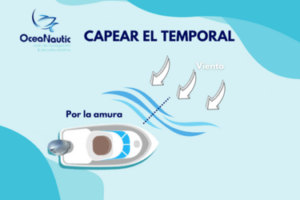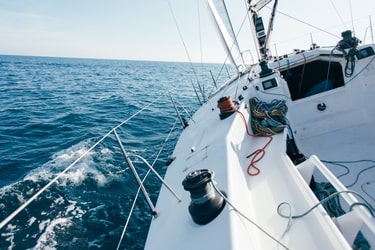Perhaps this topic, the security, is the most restless and the more respect he gives to the hour of sailing, that is why it is one of the issues addressed in the course of PER/GNP in Our Sailing school in Málaga, a school specialized in training patterns for all nautical qualifications. Find us with a temporary bad sea conditions, is one of the biggest fears when it comes to navigating and who has lived a temporary, know that we talk about. So, How can you weather the storm?
First of all, to remind you that, for your peace of mind, our team consultation to daily weather conditions several times a day. If you rent your boat with us and you are inexperienced, you will notify you and give you the option to change your reservation to another day that will be safe for you and your companions.
Even so, however much we may enquire of the weather conditions, the sea can change and surprise us at any time. Hence the importance of having the training and tools necessary to know how to act when the time comes.
What should you know?
- Keep calm and do not rush. It seems obvious, but the nerves may play tricks. If you've trained and know how to act, this will help you. If possible, and if you're around, it would be advisable to turn around and return to port.
- Life jackets. To have on hand in case of need, as well as a vhf radio.
- Knowing the type of your boat, possibilities and limits. We know, for example, that, in adverse conditions, it will not act like a motorboat that a sailing ship.
- Decide how to Weather the storm or run time? When is it better to do one or the other?
Let's see what they consist of both:
WEATHER THE STORM:
In this way, “we face” to the storm. We sail to the minimum safety speed receiving the waves on the bow. And avoid the surf hit with the bow and damage to our boat. With this technique camping the temporaryour boat slowly moves forward, but we avoid to give to drift until the weather dies down.

If the storm is so strong, that our boat can't weather or not doing so is dangerous, we will pass to the following technique:
RUNNING TIME:
We head to the same direction that the wind and the waves, so that they “run” the boat in that direction. We sail to the minimum safety speed, receiving the waves on the fin or tail.

We RECOMMEND: when in doubt, we will choose weather the storm. Even so, it is the Employer who must assess which technique to use depending on the situation they find themselves in, their experience and the type of vessel, taking into account the basic elements of weather that is.
And remember sailor who, after the temporary, always, always, comes the calm...
If you want to know more you can visit our blog and read more articles like Nautical activities this summer in Malaga.
